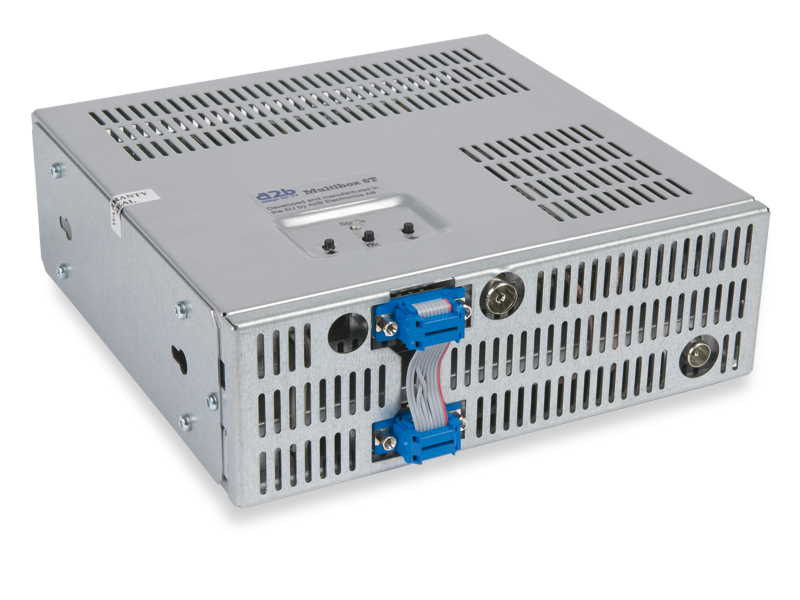TechRadar Verdict
A neat way to convert legacy TV and video equipment in larger buildings, the Multibox is simple and, if a large number of rooms is involved, it's cost-effective. But it seems pricey, given that it distributes only six of the 48 Freeview TV channels and because the image is not as clear as it could be
Pros
- +
Adds Freeview channels to any RF distribution network
- +
Easy to set up
- +
Supports 16:9 widescreen and stereo sound
Cons
- -
Only six channels can be chosen
- -
Can be prone to UHF interference
- -
Costly if you just connect a few rooms
Why you can trust TechRadar
With analogue switchover well under way in the UK, the Multibox offers a convenient way of converting an entire building's TVs to receive digital broadcasts.
The Multibox 6T by A2B Electronics is made to go in an attic or cupboard rather than be on show. The box connects to the main roof aerial of any building and when first activated it auto-tunes six built-in digital tuners to a pre-set list of channels: BBC One, BBC Two, ITV1, Channel 4, Five and CBBC.
There is a single RF output socket to which you can attach a splitter and distribute to a maximum of about 10 TVs, VCRs or other recorders through conventional UHF coaxial cabling. Additional devices would need signal amplifiers. Any TVs on this network can then get those six digital channels without using a Freeview tuner.
Many properties – retirement homes or houses divided into flats – already have this kind of wiring. To upgrade every TV may not be feasible in all cases. At several hundred pounds, the Multibox isn't cheap, but it may be cheaper than buying stacks of new hardware.
The Multibox replaces the current analogue channels with their digital equivalents and with little disruption, though each TV involved needs retuning. If analogue channels are still being broadcast the Multibox's six channels will appear after them in an automatic search, or the TVs can be retuned manually to put the 'new' channels in place of the old ones. An indicator can be overlaid temporarily onscreen to help retune all of the TVs correctly. It's possible to change the line-up, although the product is most likely to be used to upgrade non-digital TVs and keep the current main channels on screen.
With only six tuners, it does not provide the whole Freeview package in one go, but the unit does pass on all digital signals so anyone can add Freeview boxes or new TVs for the full range of channels in individual rooms. In theory, more than one Multibox could be daisy-chained together if output frequencies are kept apart. The biggest cause of debate will be what should be on channel six instead of the default CBBC.
The Multibox's initial tuning is automatic, making installation easy. As well as the selection of Freeview channels, output frequencies can be changed manually in case of interference. By default the remodulated BBC One is on 591.25MHz (E36), which is close to Five in the London area and caused us some picture disturbance.
The unit provides an onscreen menu for retuning, changing the channel choices, specifying subtitle preferences and output frequencies. You'll need a TV within reach of the box to see the menu.
Anamorphic widescreen is supported so that 16:9 TVs get a proper picture, while 4:3 sets show a letterboxed version. The Multibox encodes the Freeview stereo soundtrack into Nicam for TVs that are compatible.
Picture quality is not as good as connecting a Freeview box to a TV via RGB Scart or HDMI. There is dot crawl on saturated colours and despite altering settings we still ended up with a sheen of interference on some channels. But the Multibox's digital decoding appears robust.
Follow TechRadar Reviews on Twitter: http://twitter.com/techradarreview
